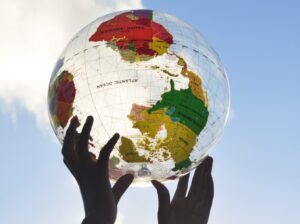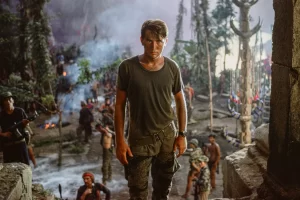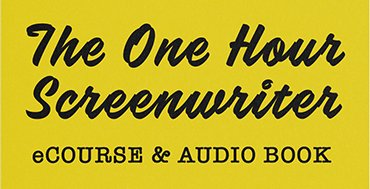THE VISUAL WORLD 1
PART 1

This is a three (3) part series exploring the visual world of a film.
The visual world of a film is not just the place the protagonist happens to be.
It is a physical metaphor for the arc of the protagonist’s character.
The visual world cues the audience as to how your protagonist “sees” his/world
and him/herself. It expresses the emotional state of the protagonist. It
should be as unique as the protagonist him/herself. The visual world should
develop and become more detailed as we learn more about the protagonist
and as his/her character develops.
Even a film set in a familiar city can do this. For example: The New York
City of MANHATTAN or YOU’VE GOT MAIL is very different from the
New York City of TAXI DRIVER or BRINGING OUT THE DEAD. More
recently the New York of IN THE HEIGHTS couldn’t be more different than A
QUIET PLACE: DAY ONE.
The best films condense the visual world of the film to as small an area as
possible. These films construct a single unified space surrounded by some
kind of hypothetical “wall” which separates the action from everything else.
This area must be large enough for diversity and conflict but contained
enough to heighten and concentrate the action. Good games require
manageable, clearly defined playing fields.
There is also rich symbolic value inherent in different types of visual worlds.
Used wisely, this symbolism will heighten and deepen the richness of a
story.
THE OCEAN WORLD
Water is the most powerful medium of suspension. The ocean world is a
weightless world. Time moves at a different pace here. Light is dim and
liquid. It is a dreamlike place. The ocean depths are places of our deepest
fears. This world contains hidden dangers and sunken treasure. Bizarre or
prehistoric creatures still roam free. It is a place of the past—ancient
Atlantis, old shipwrecks and sunken civilizations lie hidden on the ocean
floor.
Both JAWS and OPEN WATER certainly use the implacable terror of the deep to
great effect.
THE WORLD OF OUTER SPACE
Outer space is a world of the imagination. It is a place of unlimited
diversity—any kind of terrain and any kind of creature can exist here. This
is a world of infinite adventure. The physical rules of our world don’t apply.
Time/space logic is altered here. Outer space can be a place of the future or
a place of the past. It can be a place of potential utopia or hellish
oppression.
2001: A SPACE ODYSSEY is the great granddaddy of modern interstellar movies.
GUARDIANS OF THE GALAXY takes a psychedelic view of space.


THE JUNGLE WORLD
The jungle is a place of rot and riot. Here the dead decompose as nature
runs rampant over the fallen corpses. Order breaks down here and chaos
eats away at the civilized world. Man can never tame the jungle. Here,
chaos is always more powerful here than control.
The jungle is a place of disease, delirium and madness. It’s a world where
animals eat other animals and where the most civilized men can be reduced
to animals. The natural order is kill or be killed.
APOCALYPSE NOW best exemplifies the horror, rot, and chaos of the jungle as a
metaphor for the War in Vietnam.
It’s impossible to gain perspective here. Things are too tangled and
twisted—logic is obscured and choked like trees overrun by vines. In the
jungle world, we can only see a short way ahead. Death and destruction
lurk, unseen, right in front of us. It is a place of unexpected terror and
invisible enemies.
THE FOREST WORLD
The Forest is a wild place but it is tamer than the jungle. This is a place
where people get lost and can’t find their way. It is a dark place. Danger is
everywhere. Wild beasts wait in the shadows with red eyes and bared fangs.
Ghosts live here and haunting often occurs in the forest world. The forest is
a place of the past. It is the world of ancient fairytales. Fear comes from the
mind of the person lost there as often from any actual danger encountered.
INTO THE WOODS is a great example of the enchanted forest. BLAIR WITCH
PROJECT chillingly expresses the horror and myth of the woods.
To be continued in PART 2




Create a visual map for a character’s emotional journey. Pull stories from character rather from rote story structure beats. Some of the largest international media companies, use this in story and character development.


A clear concise guide for writers and producers to have by their side as they embark on a project. It gives a really vital reminder of what is key for story success.

No comment yet, add your voice below!